Timber harvest creates wildlife habitat and provides education opportunities
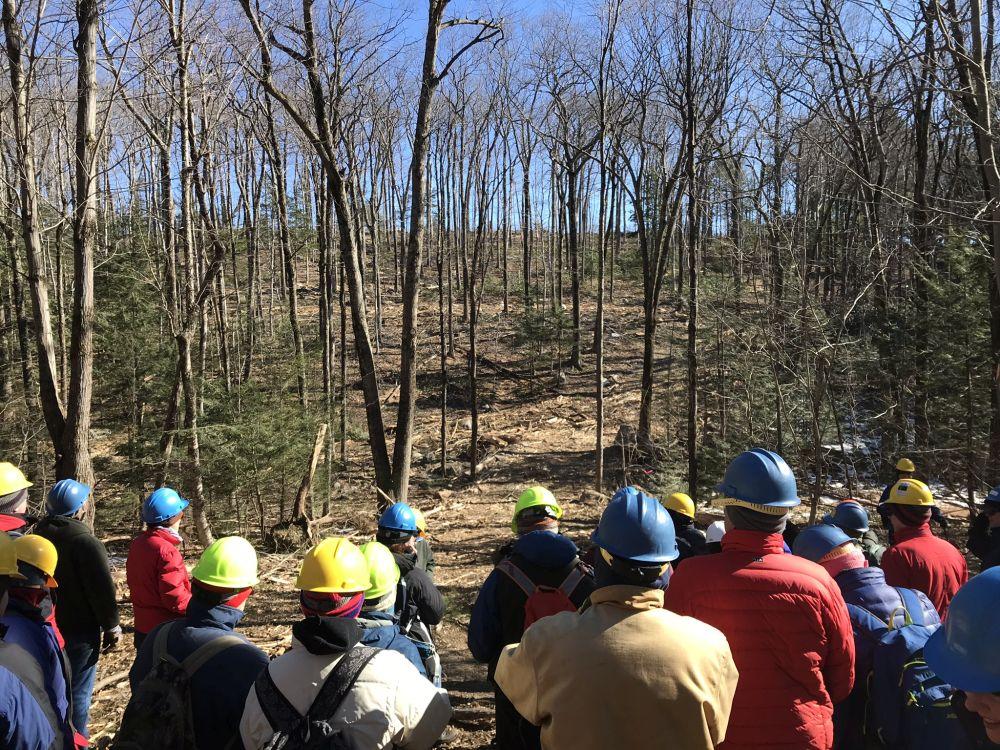
This hillside cut was designed to regenerate a thicket of mountain laurel in the understory. The results will help inform land managers on methods to create habitat for state-endangered New England cottontail rabbits in other locations where they are present in New Hampshire.
On Saturday February 9, fifty hardy guests and forestry and education staff braved windy conditions to conduct a public timber harvest tour on a roughly 200 acre portion of the 1492 acre Forest Society Heald Tract in Wilton.
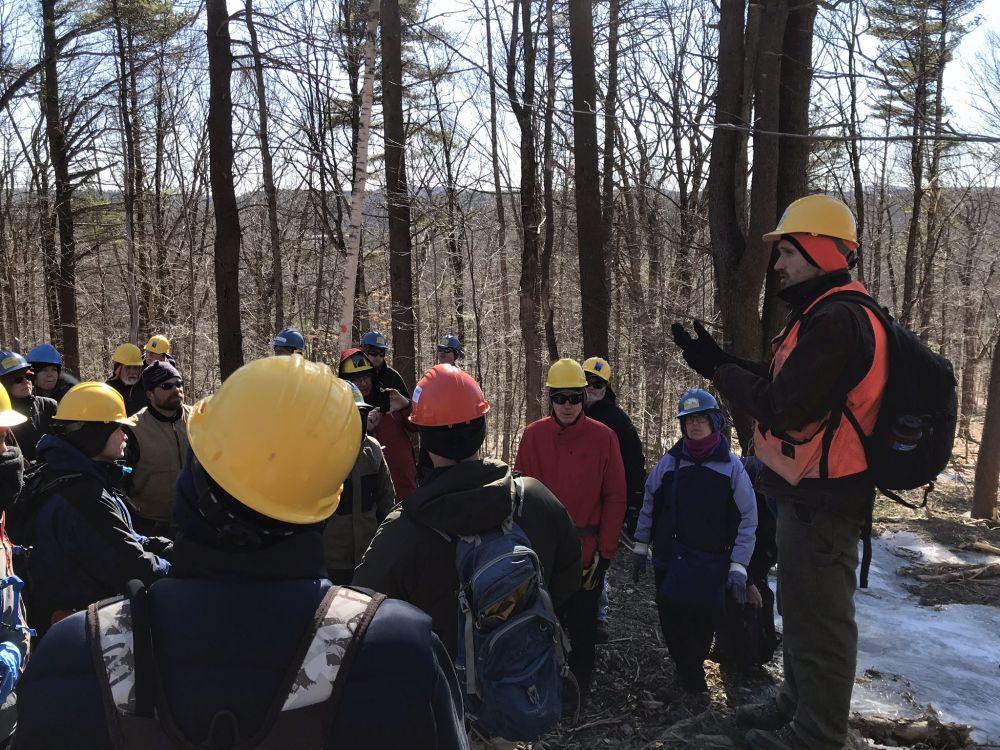
Forest Society foresters Gabe Roxby (right) and Wendy Weisiger were joined by UNH Cooperative Extension forestry educators Ethan Belair and Steven Roberge, Meadowsend Timberlands consulting forester Jeremy Turner, and logging contractor Don Hardwick Jr to explain timber stand prescriptions and special considerations for areas being logged. U.S. Fish and Wildlife Service (USFWS) New England Cottontail biologist Ted Zendziora discussed New England cottontail rabbit habitat needs, population history and available funding for landowners in the focus area who wish to pursue NE cottontail habitat restoration. This timber harvest includes special wildlife experimental cuts and more traditional patch clearcuts to create a diverse mosaic of tree ages and species, favor the regeneration of higher value hardwoods or softwoods, and create blocks of early successional habitat. Sun-loving oak, pine, white birch and aspen require larger openings as they are intolerant of partial shade while seedlings and saplings.
Cold temperatures have facililtated ongoing timber harvest operations on several Forest Society Reservations this winter. Hard, frozen ground is a prerequisite in areas with a high water table following a wet autumn and early winter. Temperature fluctuations become a concern if soil thaws. Logging and trucking on dirt roads stop temporarily during short thaws to avoid creating mud or ruts. We experienced ample cold and wind with snow in the forecast for a landscape that has seen little so far this winter.
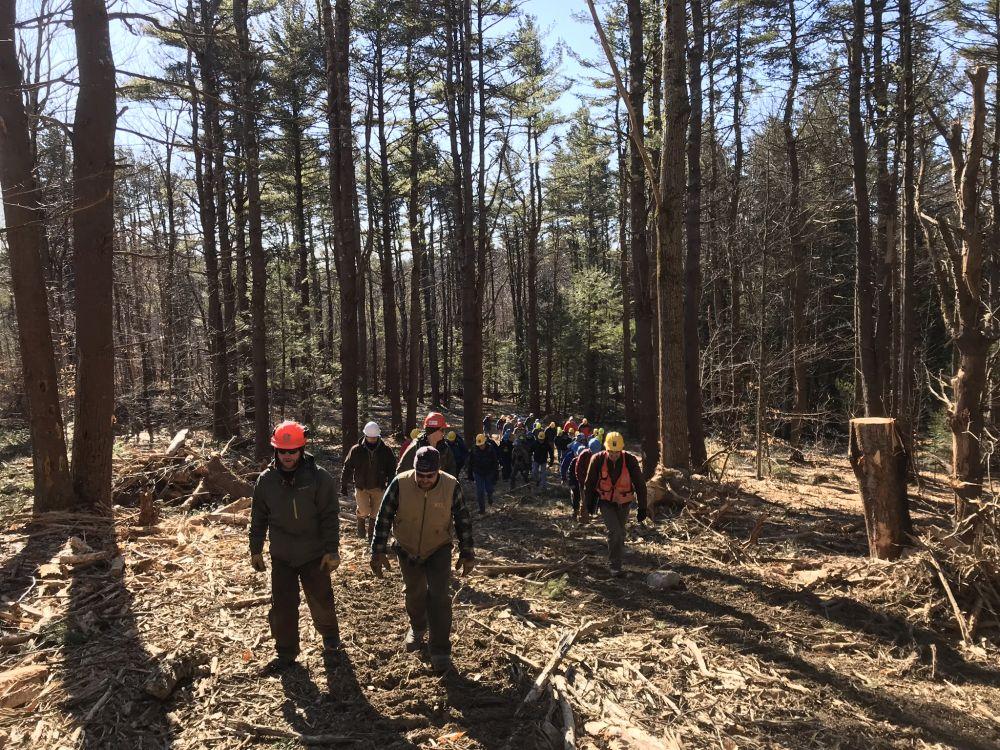
Jeremy Turner and Don Hardwick, Jr helped to explain the in-the-woods coordination of mechanized timber harvesting equipment: a Timber-Pro feller buncher operated by experienced logger Joe Hardwick and two John Deere grapple skidders. Jeremy lays-out the harvest architecture and walks the woods with the logging contractors. Skid trails were delineated prior to the timber sale with orange survey flagging. Trees to be cut were painted with blue forestry paint. Sensitive features including wetlands were flagged with pink survey flagging and harvest boundaries marked with a triple blue paint marks. Wildlife features including standing live cavity trees are marked to stay. Poorly formed, larger diameter pine stems may be girdled with a chainsaw to create future standing dead snag trees to benefit wildlife.
Several adjacent stands or 8 distinct blocks collectively totalling approximately 40 acres were selected for the rabbit habitat experimental cuts at a lower residual basal area (tree density) of 80 and 30 square feet respectively. For more information about the rabbit habitat research goals and how they will benefit other land managers, read about the pre-harvest tour here.
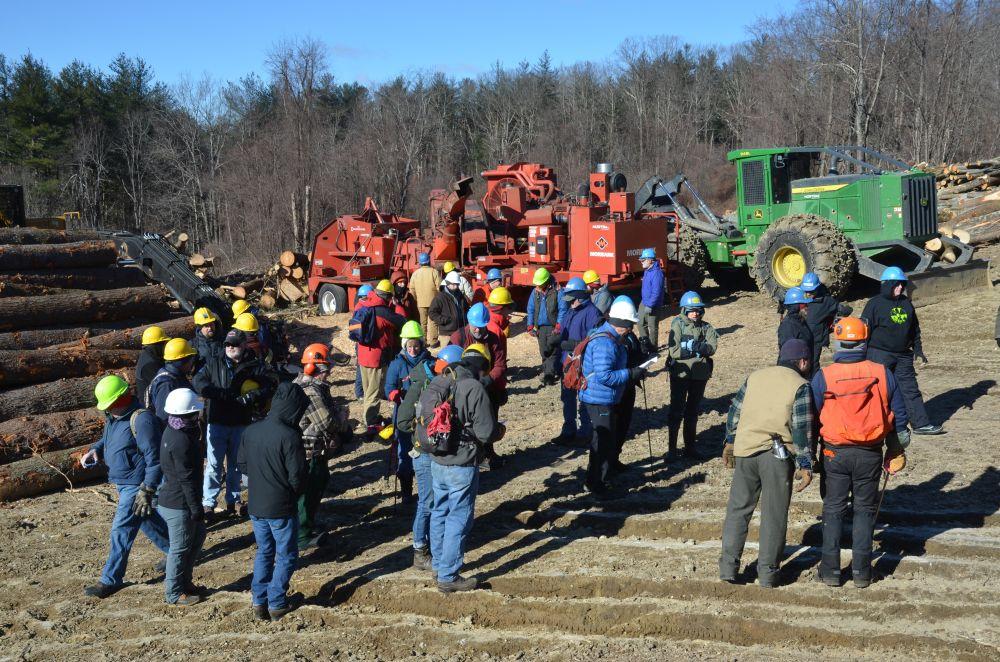
In addition to learning about the in-the-woods logistics and operation of the ongoing logging, participants visited the timber landing or "log deck" where a large red chipper utilizes low grade wood - tops, limbs, branches and non-commercial stems - as fuel for biomass electricity plants. Large 18-wheel tractor trailers pull chip vans carrying up to 30- tons of fuelwood chips.
A portion of non-sawlog quality hardwood stems are sold as solid fuel wood into cordwood markets. Non-sawlog quality pine stems are sold as pine pulp to a softwood pulp mill located far from Wilton in Jay, Maine.
Higher quality hardwood and softwood sawlogs of various lengths are sorted and cut by a mechanical arm with a grapple hook, the hydraulic "yard loader" paired with a huge circular saw called a "slasher" that bucks each log to length determined by log species, grade, and product sort. The highest quality specialty logs are set aside for premium grade products. For example, white ash logs are trucked to a mill in Vermont operated by True Temper and sold for residential tool handles including shovels, garden rakes, axe or maul handles. Highest quality, near-perfect, cylindrical red oak sawlogs free of any knots, seams, hollows or curving "sweep" are set aside as veneer logs and will be shipped whole to an overseas veneer mill to be sliced or peeled into thin sheets for specialty furniture and flooring markets - many in Southeast Asia including China - where demand for Monadnock Region red oak remains strong.
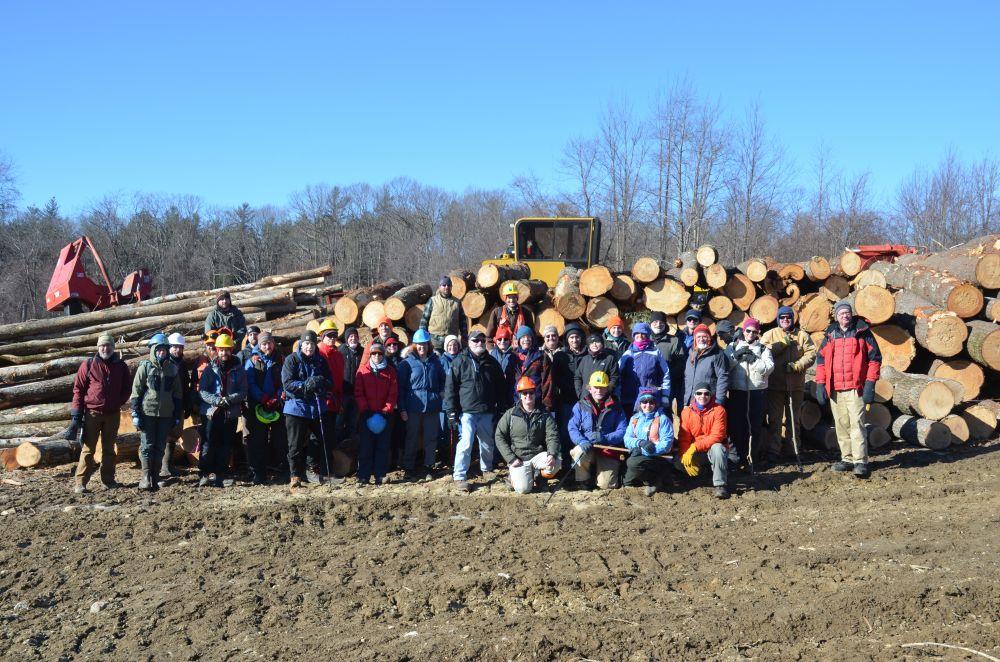
New Hampshire forestlands can provide high quality forest products and diverse wildlife habitats. The timber harvest at the Heald Forest provided an extraordinary opportunity to achieve both timber and wildlife habitat goals while assuring the protection of recreational trails and water quality. The temporary openings enhance the scenic values, creating new vistas on Fisk Hill in Temple and from a 12-acre former hilltop orchard in Wilton. The educational opportunity was made possible by the professional expertise and generosity of consulting partner organizations and agencies: UNH Cooperative Extension, Meadowsend Timberlands, D.L. Hardwick and Sons Logging, and the USFWS and New Hampshire Fish and Game biologists. We all recognize the value of education for New Hampshire residents, many of whom have never had an opportunity to tour a logging operation and ask a myriad of questions.
Bringing people together to showcase winter logging operations is a hallmark of the Forest Society's forestry and education programs. When people are able to visit an active timber harvest, it's an opportunity to better understand why we cut trees, where we grow specific forest types, and how we fulfill wildlife habitat goals. Attendees often walk away with an acknowledgement of their own forest products consumption footprint.
We live in one of the very best wood growing regions in the world. Rather than export our own daily demands for heat, electricity, paper, fiber, lumber and specialty products to far-flung places, managing our New Hampshire forests provides wood and economic opportunities for our State's residents. Wood is a renewable resource that the Forest Society is proud to harvest responsibly and sustainably.
